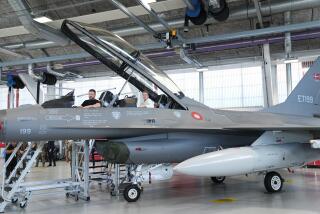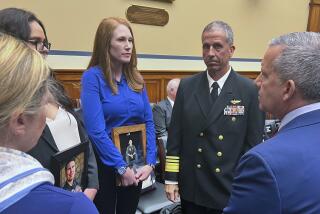Pentagon working with FAA to open U.S. airspace to combat drones
With a growing fleet of combat drones in its arsenal, the Pentagon is working with the Federal Aviation Administration to open U.S. airspace to its robotic aircraft.
As the wars in Iraq and Afghanistan wind down, the military says the drones that it has spent the last decade accruing need to return to the United States. When the nation first went to war after the Sept. 11, 2001, terrorist attacks, the military had around 50 drones. Now it owns nearly 7,500.
These flying robots need to be shipped home at some point, and the military then hopes to station them at various military bases and use them for many purposes. But the FAA doesn’t allow drones in national airspace without a special certificate.
These aircraft would be used to help train and retrain the pilots who fly the drones remotely, but they also are likely to find new roles at home in emergencies, helping firefighters see hot spots during wildfires or possibly even dropping water to combat the blaze.
At a recent conference about robotic technology in Washington, D.C., a number of military members spoke about the importance of integrating drones along with manned aircraft.
“The stuff from Afghanistan is going to come back,” Steve Pennington, the Air Force’s director of ranges, bases and airspace, said at the conference. The Department of Defense “doesn’t want a segregated environment. We want a fully integrated environment.”
That means the Pentagon wants the same rules for drones as any other military aircraft in the U.S. today.
Robotic technology was the focus of the Assn. for Unmanned Vehicle Systems International’s annual program review conference in Washington last week. For three days, a crowd made up of more than 500 military contractors, military personnel and industry insiders packed the Omni Shoreham Hotel to listen to the foremost experts on robots in the air, on the ground and in the sea.
Once the stuff of science-fiction novels, robotic technology now plays a major role day-to-day life. Automated machines help farmers gather crops. Robotic submarines scour the ocean floor for signs of oil beds. Flying drones have become crucial in hunting suspected terrorists in the Middle East.
Drones such as the jet-powered, high-flying RQ-4 Global Hawk made by Northrop Grumman Corp. have also been successful in providing aerial coverage of recent catastrophic events like the tsunami in Japan and earthquake in Haiti.
The FAA has said that remotely piloted aircraft aren’t allowed in national airspace on a wide scale because they don’t have an adequate “detect, sense and avoid” technology to prevent midair collisions.
The FAA does allow exceptions. Unarmed Predator drones are used to patrol the nation’s borders through special certifications. The FAA said it issued 313 such certificates last year.
The vast majority of the military’s drones are small — similar to hobby aircraft. The FAA is working on proposed rules for integrating these drones, which are being eyed by law enforcement and private business to provide aerial surveillance. The FAA expects to release the proposal on small drones this spring.
But the Pentagon is concerned about flying hundreds of larger drones, including Global Hawks as well as MQ-1 Predators and MQ-9 Reapers, both made by General Atomics Aeronautical Systems Inc. in Poway.
And last week Congress approved legislation that requires the FAA to have a plan to integrate drones of all kinds into national airspace on a wide scale by 2015.
The Army will conduct a demonstration this summer at its Dugway Proving Ground in Utah, testing ground-based radars and other sense-and-avoid technology, Mary Ottman, deputy product director with the Army, said at the conference.
These first steps are crucial, said Rep. Henry Cuellar (D-Texas), who co-chairs a bipartisan drone caucus with Rep. Howard P. “Buck” McKeon (R-Santa Clarita). Officially known as the Congressional Unmanned Systems Caucus, the panel was formed in 2009 to inform members of Congress on the far-reaching applications of drone technology.
McKeon also said he was in favor of moving along the process of integrating drones into civil airspace. This came before he was abruptly interrupted by an anti-drone female protester during a speech.
“These drones are playing God,” she said, carrying a banner that read “Stop Killer Drones.” She was part of a group that wants the end of drone strikes.
Within seconds, hotel security personnel surrounded the woman. She was carried out chanting, “Stop killer drones.”
McKeon, who stood silent throughout the brief protest, went on with his speech.
More to Read
Sign up for Essential California
The most important California stories and recommendations in your inbox every morning.
You may occasionally receive promotional content from the Los Angeles Times.











